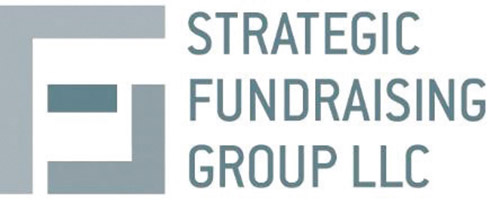
There is a lively debate over whether nonprofit board members should engage in fundraising. You must be surprised, I understand. Me, too. I will do my best to explain why they shouldn’t cease raising money.
But first…
Jimmy LaRose, an entrepreneur, author, fundraiser, speaker and co-founder of the National Association of Nonprofit Organizations & Executives (NANOE) is running workshops around the country called “Stop Board Fundraising.” He contends that requiring board members to fundraise is an industry scam. To quote: “You’ll learn from the masters who defied convention and challenged the false thinking that keeps charities broke.” I appreciate his insight, but still believe in the traditional approach. Despite being broken, the system can and should be fixed.
It is common for many nonprofits to have board members who are proficient at fundraising. Set aside that group. Since they know what they’re doing, why fight success? Small to midsize 501(c)(3) organizations, however, are often left with no choice in the matter because some cannot afford to hire professionals.
What likely prompted this banter are many boards that, in all candor, are inept. (There, I said it!) There also are the reluctant ones and individuals who fall into one of the categories described in my article entitled “There Are 12 Types of Nonprofit Boards!” (See InsideCharity, August 2, 2022 issue). Hence, I confess—not all board members are qualified to fundraise.
Allow me to share a reminiscence about the former president of an organization where I worked. We were embarking on a multimillion-dollar capital campaign that required the enthusiastic involvement of lay leaders. To enlist their support, I met with each director. I succeeded, with one exception.
A past president I linked with could make generous philanthropic gifts if he so desired. He was not shy about sharing information about his vast financial portfolio. Using a trust he controlled, he paid his couvert annually for the gala. Not his money. He also begrudgingly disbursed his yearly dues from the same account. Not his money. As I walked in to discuss the pending fund drive, you can imagine his look.
During our chat, I explained the campaign strategy and his crucial commitment. As he sat in the meeting, his arms and legs were tightly crossed. His body language was telling. In response to my comments, he pointed to a nearby wall that was adorned with plaques from different institutions that recognized his humanity, not his charity. His purpose was to declare that he was involved in a noble form of self-sacrificing activity, that of volunteering. The idea of raising funds didn’t appeal to him.
It is this unwillingness to help with fundraising, and related issues, which explains the frustrations with boards. Problems abound such as mixed allegiances to multiple institutions, being uninitiated in the ways of raising funds, a dearth of resourcefulness, a lack of affluence and/or confidence to succeed, and other stumbling blocks. As the sun rises in the east and sets in the west, there is no end to the excuses for why board members are not suitable to fundraise.
There is a long history of governing bodies failing to fulfill their philanthropic responsibilities. I get it. As a result, some industry experts feel that the time has passed for boards to prove themselves. Instead, they insist that the development staff raise the money.
Nevertheless…
Many sources can be cited that define director roles. A majority, however, agrees that these comprise three fundamental duties: governance, advocacy and philanthropy. Securing contributions is essential for the latter.
So, I take a different approach. Even when boards fail to meet expectations, we must not give up. Our job is to educate, involve and engage board members to be effective fundraisers. I know. Easier said than done.
An attitude of practicality should be adopted toward ineffective directors. People who don’t “deliver the goods” should be thanked for their service and replaced. Or, create an emeritus position or an honorary directorship for them if their governance and advocacy have been consequential.
In the online article “How-to: Engage Your Board Members as Fundraisers” (March 23, 2021), Flipcause suggests ways that governing bodies can be efficacious in their positions.
1. It starts from the top. Both the chairperson and the chief executive must create a fundraising-receptive culture.
2. Goals should be set that correlate with the nonprofit’s targets and an understanding that these aspirations need to be met for the mission to be advanced.
3. Financial expectations must be spelled out for potential new members. If unwilling, then their selection or tenure should be reconsidered.
4. Choose a peer on the board who commands respect, gives generously and can rally support.
5. Leadership should make a dollar commitment before joining.
6. Provide them with the tools and resources they need to succeed.
7. The development staff must cultivate donors brought into the organization.
8. Recognize, recognize, recognize. Always acknowledge board service and triumphs.
Dr. Sally Burbank, a Nashville physician and author, is quoted as saying: “Work hard for a cause, not for applause. Live life to express, not to impress. Don’t strive to make your presence noticed, just make your absence felt.” If you can inculcate these ideas on your board, then it will succeed in its multifaceted mission.
Norman B. Gildin is the author of the book on nonprofit fundraising “Learn From My Experiences.: He is the president of Strategic Fundraising Group, whose singular mission is to assist nonprofits to raise critical funds for their organization. His website is www.normangildin.com.










